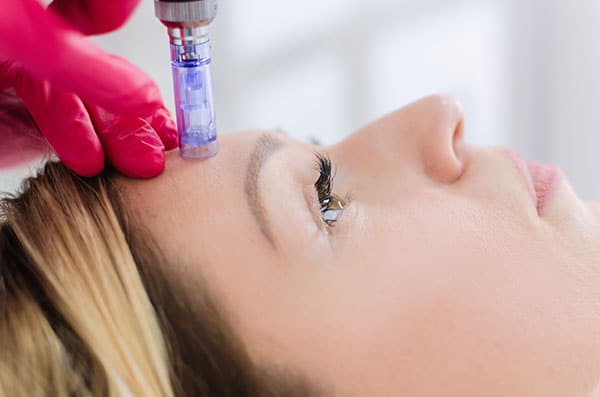
What Is Microneedling?
Microneedling is a cosmetic procedure in which the skin is pricked with tiny sterilized needles. The small wounds cause your body to make more collagen and elastin, which heal your skin and help you look younger.
What are the benefits of microneedling?
Microneedling may help with issues like:
- Fine lines and wrinkles
- Hair loss (also called alopecia)
- Dark spots or patches on your skin (hyperpigmentation)
- Large pores
- Reduced skin elasticity
- Scars
- Acne
- Stretch marks
- Sun damage
Microneedling is a less expensive alternative to cosmetic laser treatments, which can cost about four times as much. Microneedling may work better for people with darker skin tones because it doesn’t involve heat the way laser treatments do, which can affect your skin’s pigmentation, or color.
What Happens When You Get Microneedling
First, you’ll get a numbing cream smoothed onto your face so you don’t feel the needle pricks. Then the provider will maneuver a pen-shaped tool with tiny needles around the area being treated. The needles make small, shallow punctures in your skin, which may cause a bit of bleeding. After the microneedling, your provider may choose to rub a PRP (platelet rich plasma) serum on the skin to further enhance the collagen and elastin production during the healing process. The procedure usually takes 10-20 minutes, depending on how big the area is. Most people need 4-6 treatments to see a difference. But the changes can be dramatic.
The goal of the procedure is to start your body’s healing process by sending collagen and elastin to patch up the tiny injuries. Collagen helps fill in and smooth out wrinkles, while elastin helps the skin regain its shape after stretching.
Most people choose to get microneedling on the face, but it can be done on other parts of the body, such as your stomach, hands or thighs.
Microneedling Risks
Some things to think about before deciding to try it:
Go to a Professional. There are do-it-yourself versions of microneedling devices. But dermatologists warn against using those because you might accidentally hurt your skin, and you may not have a good way to sterilize the needles, leading to infection.
It’s not a quick fix. It takes time to notice a difference. That’s because your body is healing itself. Most people need a few treatments before they see any change.
Healing time. It may take days or weeks to heal, depending on how deep the needles pierce your skin. Most heal in a day or two.
Pain and redness. You may have some minor pain after the procedure, and your skin may be red for a few days.
Peeling. Your skin may feel tight and flake a bit while it heals.
Bruising and bleeding. There’s usually no bleeding during microneedling. But deep microneedling treatments may cause the skin to bleed or bruise.
Possible scarring. Microneedling isn’t a good idea for people who’ve had keloids, scars that look like large bubbles on the skin. It could make the condition worse.
Infection. Microneedling creates tiny holes in the skin, which could let germs enter, especially if the equipment isn’t cleaned well. But the risk of infection is very low. If you’re healthy, an infection from microneedling is unlikely.
Microneedling at Back 2 Health
In addition to education and training to become a medical provider, the providers at Back 2 Health have been trained in the use of the microneedling device. The needles that are used are one time use only and come in an individually wrapped sterile package.


